Abstract
A new plot is described for analysing the results of kinetic experiments in which the Michaelis–Menten equation is obeyed. Observations are plotted as lines in parameter space, instead of points in observation space. With appropriate modifications the plot is applicable to most problems of interest to the enzyme kineticist. It has the following advantages over traditional methods of plotting kinetic results: it is very simple to construct, because it is composed entirely of straight lines and requires no calculation or mathematical tables; the kinetic constants are read off the plot directly, again without calculation; it may be used during the course of an experiment to judge the success of the experiment, and to modify the experimental design; it provides clear and accurate information about the quality of the observations, and identifies aberrant observations; it provides a clear indication of the precision of the kinetic constants; constructed with care, it provides unbiased estimates of the kinetic constants, the same as those provided by a computer program; it may be used to simulate results for illustrative purposes very rapidly and simply.
Full text
PDF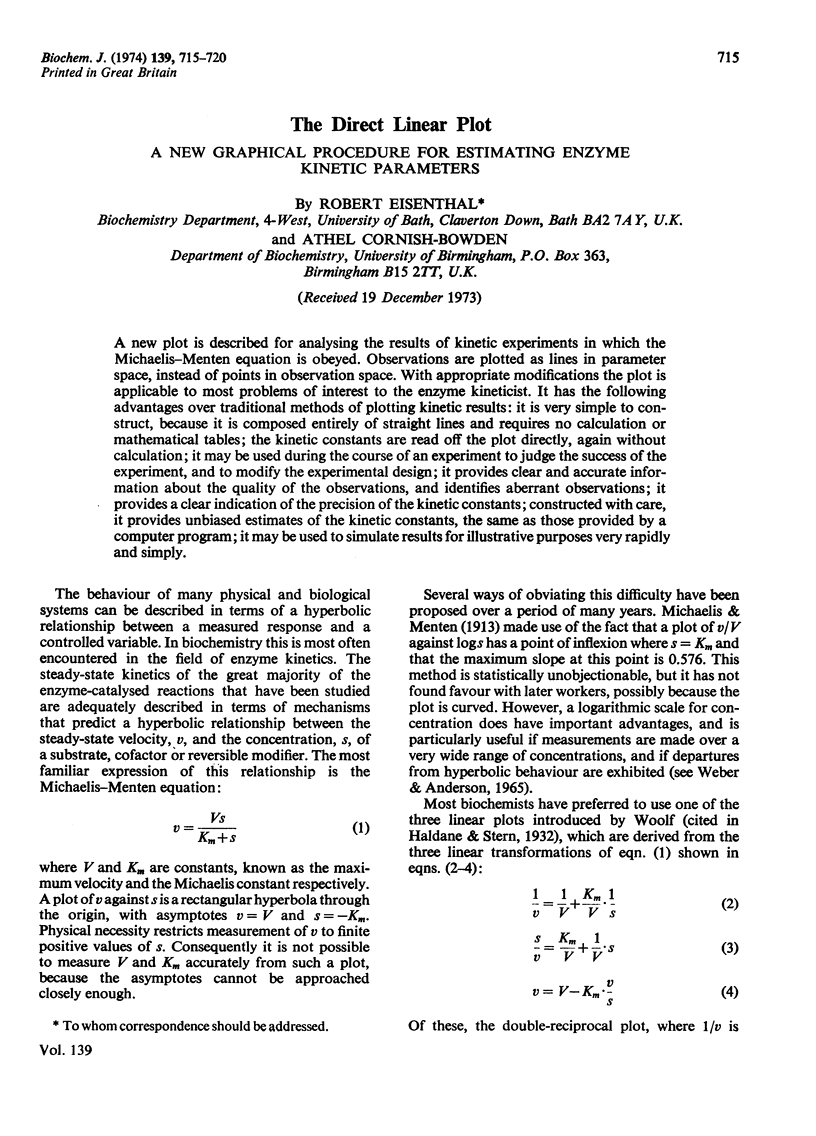
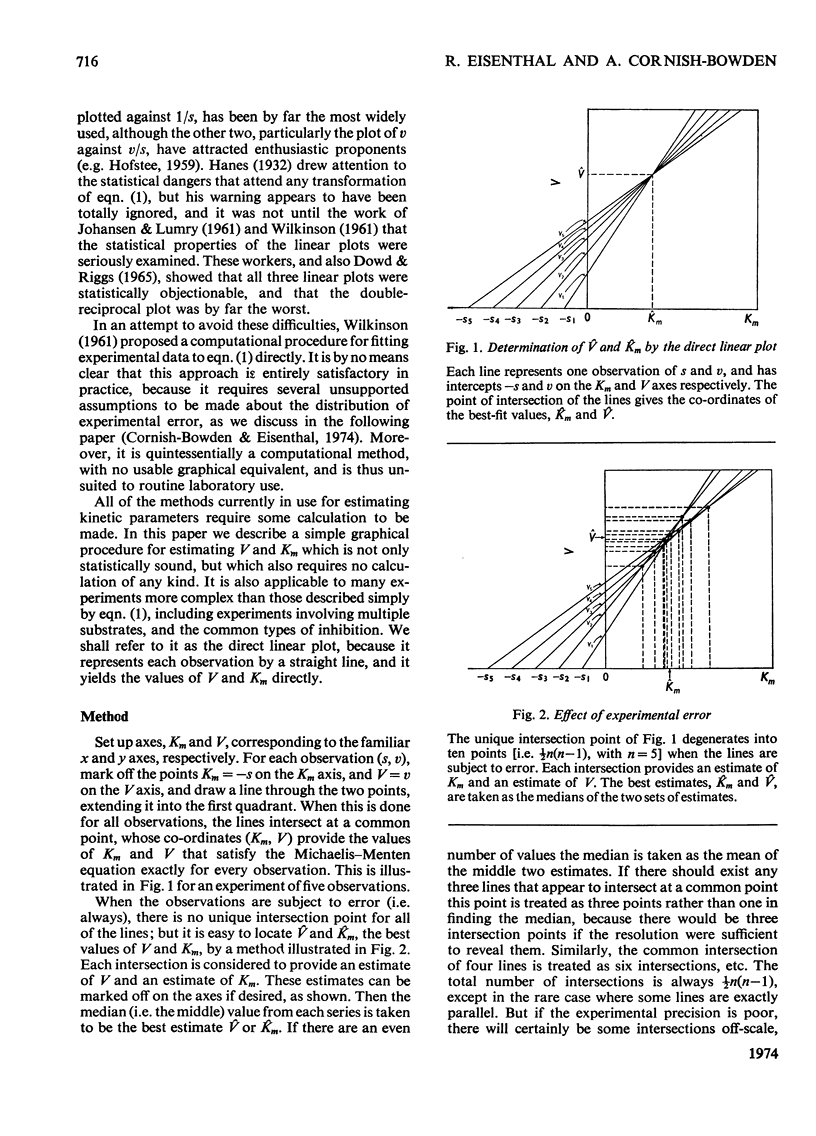
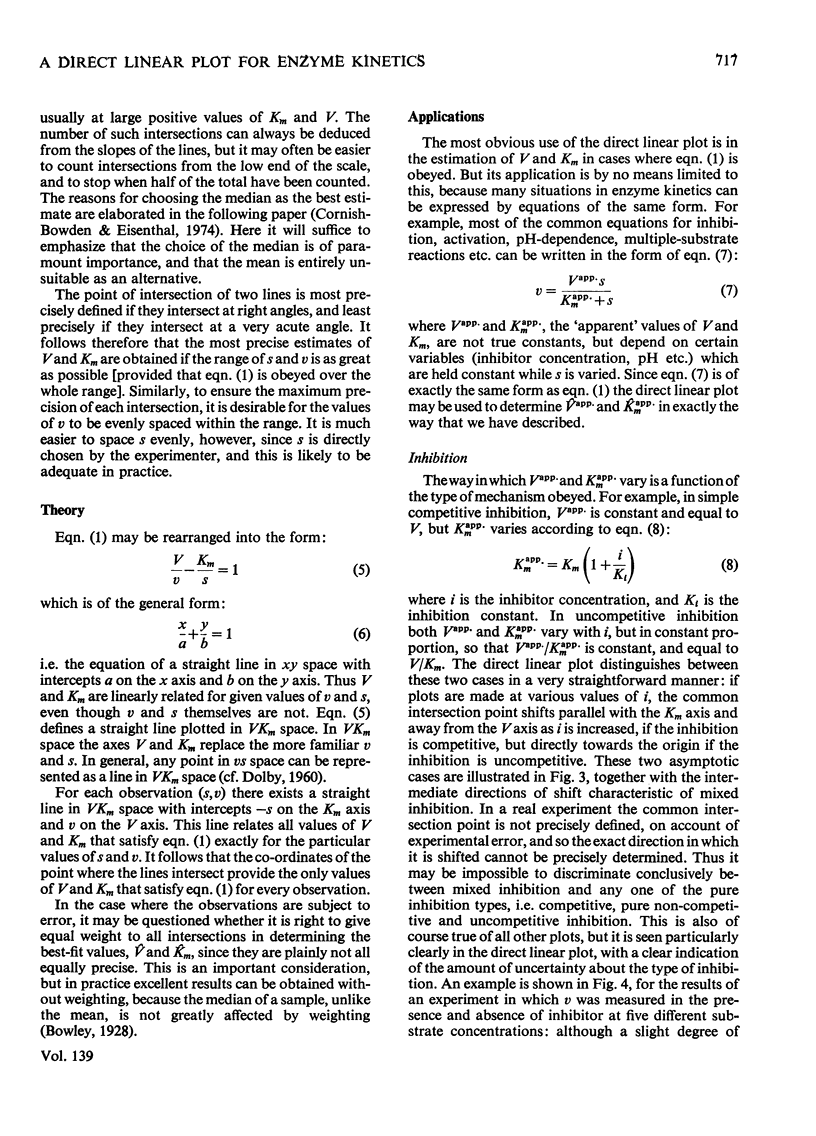
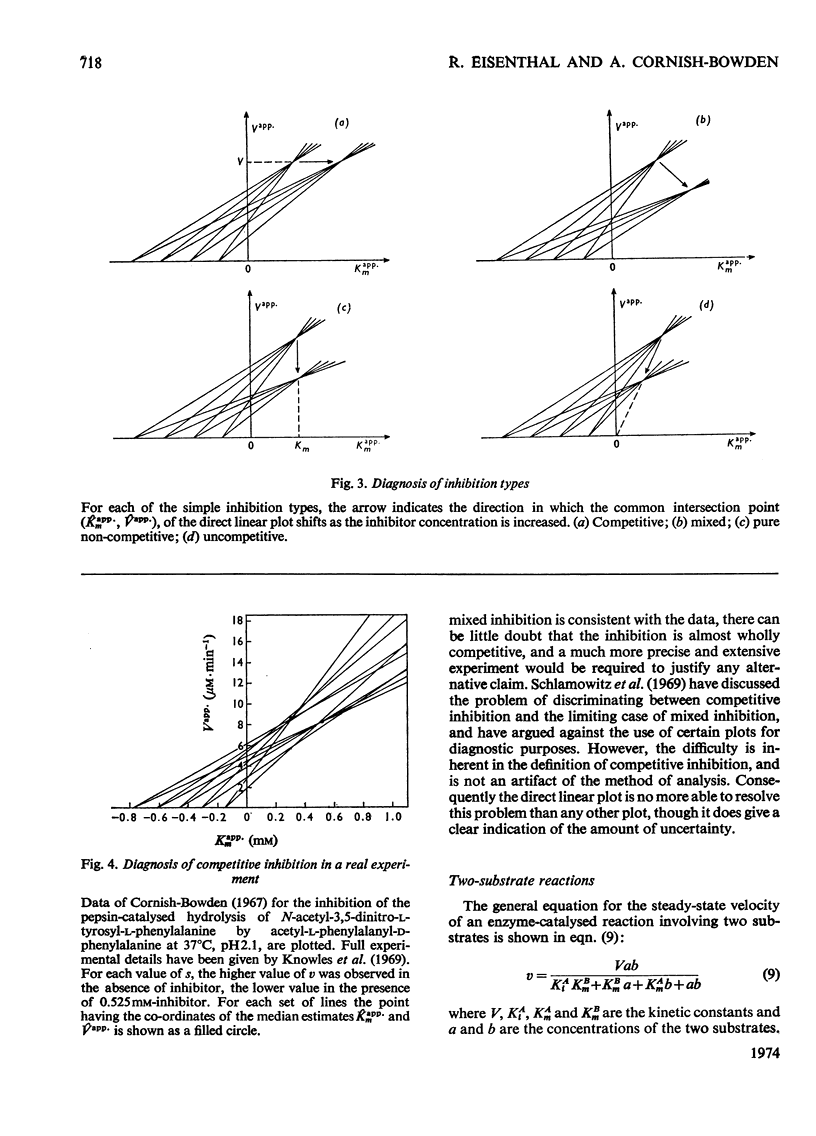
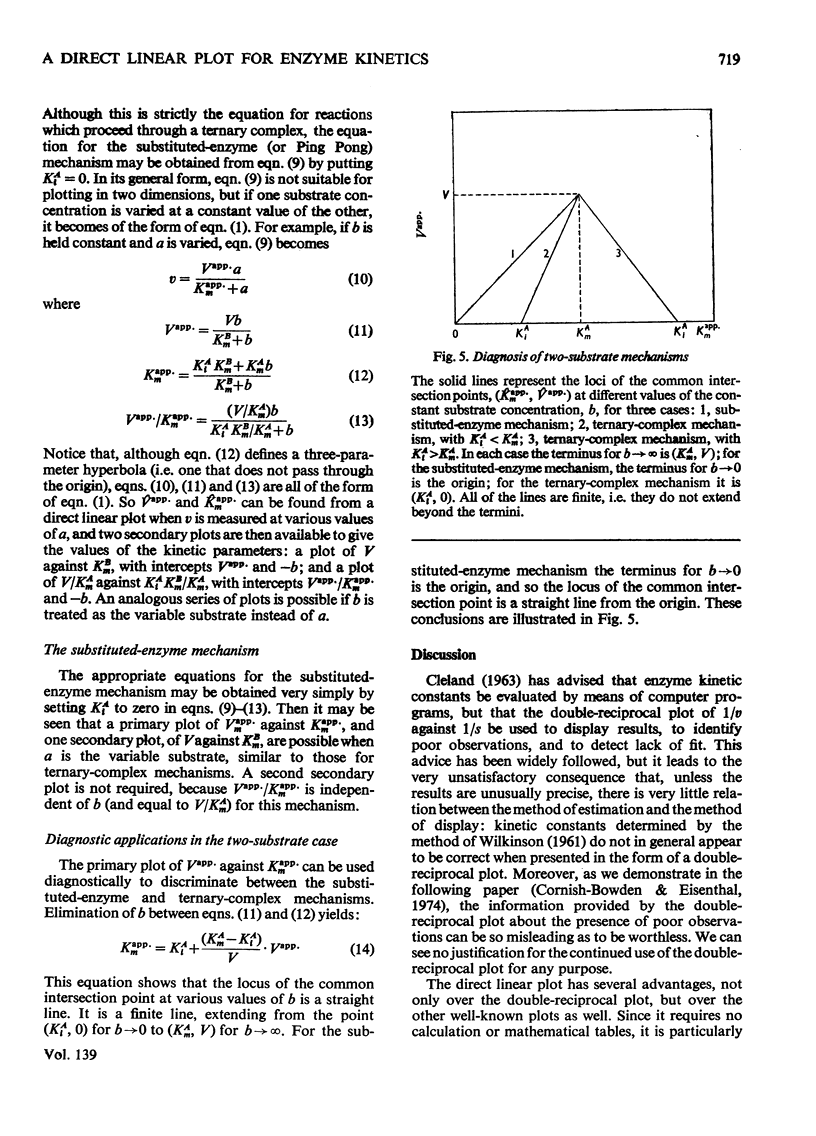
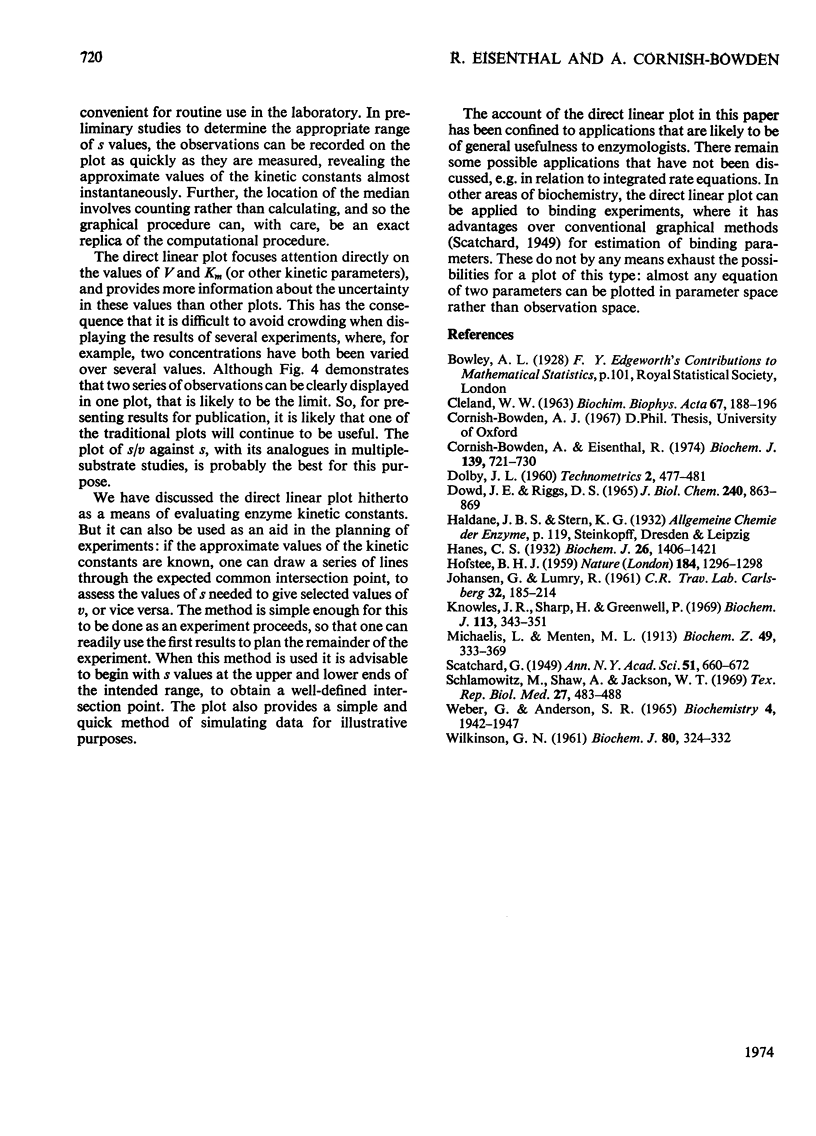
Selected References
These references are in PubMed. This may not be the complete list of references from this article.
- CLELAND W. W. The kinetics of enzyme-catalyzed reactions with two or more substrates or products. III. Prediction of initial velocity and inhibition patterns by inspection. Biochim Biophys Acta. 1963 Feb 12;67:188–196. doi: 10.1016/0006-3002(63)91816-x. [DOI] [PubMed] [Google Scholar]
- Cornish-Bowden A., Eisenthal R. Statistical considerations in the estimation of enzyme kinetic parameters by the direct linear plot andother methods. Biochem J. 1974 Jun;139(3):721–730. doi: 10.1042/bj1390721. [DOI] [PMC free article] [PubMed] [Google Scholar]
- DOWD J. E., RIGGS D. S. A COMPARISON OF ESTIMATES OF MICHAELIS-MENTEN KINETIC CONSTANTS FROM VARIOUS LINEAR TRANSFORMATIONS. J Biol Chem. 1965 Feb;240:863–869. [PubMed] [Google Scholar]
- HOFSTEE B. H. Non-inverted versus inverted plots in enzyme kinetics. Nature. 1959 Oct 24;184:1296–1298. doi: 10.1038/1841296b0. [DOI] [PubMed] [Google Scholar]
- Hanes C. S. Studies on plant amylases: The effect of starch concentration upon the velocity of hydrolysis by the amylase of germinated barley. Biochem J. 1932;26(5):1406–1421. doi: 10.1042/bj0261406. [DOI] [PMC free article] [PubMed] [Google Scholar]
- JOHANSEN G., LUMRY R. Statistical analysis of enzymic steady-state rate data. C R Trav Lab Carlsberg. 1961;32:185–214. [PubMed] [Google Scholar]
- Knowles J. R., Sharp H., Greenwell P. The pH-dependence of the binding of competitive inhibitors to pepsin. Biochem J. 1969 Jun;113(2):343–351. doi: 10.1042/bj1130343. [DOI] [PMC free article] [PubMed] [Google Scholar]
- Schlamowitz M., Shaw A., Jackson W. T. Limitations of he Dixon plot for ascertaining naure of enzyme inhibition. Tex Rep Biol Med. 1969 Summer;27(2):483–488. [PubMed] [Google Scholar]
- WILKINSON G. N. Statistical estimations in enzyme kinetics. Biochem J. 1961 Aug;80:324–332. doi: 10.1042/bj0800324. [DOI] [PMC free article] [PubMed] [Google Scholar]


